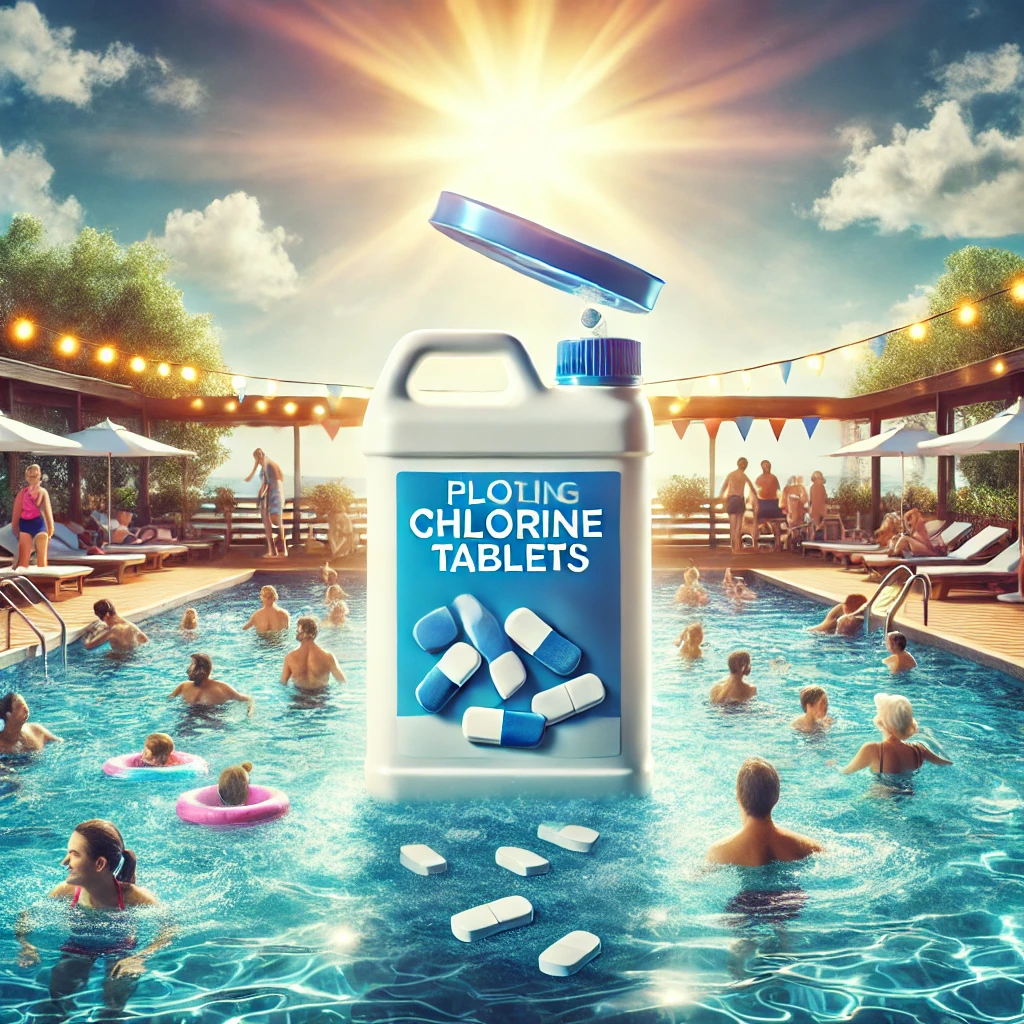Maintaining a clean and safe pool requires effective disinfection. Pool chlorine tablets are a popular choice for this task. However, improper use can damage pool equipment over time. By taking the right precautions, you can protect your pool equipment while still ensuring effective disinfection.

I. Understanding the Potential Risks
Chlorine is a powerful disinfectant, but it can be corrosive. Pool chlorine tablets, when used improperly, can cause damage to metal components, pumps, filters, and other equipment. The high concentration of chlorine in tablets can lead to wear and tear on pool infrastructure. Understanding these risks is crucial for taking appropriate protective measures.
II. Proper Placement of Chlorine Tablets
One of the key steps in protecting your pool equipment is the proper placement of chlorine tablets. Never place the tablets directly into the pool’s skimmer basket. When water flows through the skimmer, the high concentration of chlorine can damage the pump and filter system. Instead, use a chlorine dispenser or floating chlorinator. These devices release chlorine slowly and evenly, reducing the risk of equipment damage.
III. Using a Floating Chlorinator
A floating chlorinator is an excellent tool for safely dispensing pool chlorine tablets. It keeps the tablets from direct contact with pool equipment. The chlorinator floats on the surface, gradually releasing chlorine as it moves around the pool. This method ensures that chlorine is evenly distributed without overwhelming any single part of the pool system. Regularly check the chlorinator to ensure it’s functioning properly.
IV. Maintaining Balanced Pool Chemistry
Balanced pool chemistry is essential for protecting pool equipment. Pool chlorine tablets affect more than just chlorine levels. They can also impact pH and alkalinity. High chlorine levels can lower pH, making the water acidic. Acidic water is corrosive and can damage metal parts, including ladders, rails, and filters. To prevent this, regularly test and adjust the pH levels of your pool water. Aim for a pH level between 7.2 and 7.6.
V. Regular Water Testing and Monitoring
Testing your pool water regularly is a critical step in maintaining balanced chemistry. Use a reliable test kit to check chlorine, pH, alkalinity, and calcium hardness levels. Test the water at least twice a week during peak season and once a week during off-peak times. Regular testing allows you to make timely adjustments, preventing damage to pool equipment from imbalanced water chemistry.
VI. Avoid Over-Chlorination
Over-chlorination is a common mistake that can harm pool equipment. Adding too many pool chlorine tablets at once can lead to high chlorine levels. Excess chlorine can be corrosive, especially to metal parts like heaters, pumps, and pipes. To avoid over-chlorination, follow the manufacturer’s guidelines for the appropriate number of tablets based on your pool’s size. Start with the recommended amount and adjust as needed after testing the water.
VII. Using a Chlorine Stabilizer
A chlorine stabilizer, such as cyanuric acid, can help protect your pool equipment. Stabilizers extend the life of chlorine in the water, reducing the need for frequent tablet additions. With stabilizers, you can maintain effective chlorine levels without overloading the pool with tablets. This approach helps to protect both the water quality and the pool equipment from excessive chlorine exposure.
VIII. Regular Cleaning of Pool Equipment
Regular maintenance and cleaning of your pool equipment are vital for its longevity. Chlorine residue can build up on equipment, leading to corrosion over time. After using pool chlorine tablets, rinse off any visible residue from ladders, rails, and other exposed equipment. Periodically clean your pump and filter system according to the manufacturer’s instructions. Keeping equipment clean reduces the risk of chlorine-related damage.
IX. Storing Chlorine Tablets Properly
Proper storage of pool chlorine tablets is also important for protecting your equipment. Store tablets in a cool, dry place, away from direct sunlight. Exposure to moisture can cause the tablets to degrade, leading to uneven chlorine distribution. Degraded tablets may dissolve too quickly, causing spikes in chlorine levels that can harm your pool equipment. Proper storage ensures that the tablets remain effective and safe to use.
X. Routine Equipment Inspection
Regularly inspect your pool equipment for signs of wear or damage. Look for corrosion, leaks, or unusual noises from pumps and filters. Early detection of potential issues allows you to address them before they cause significant damage. Replace worn-out parts promptly to prevent further damage. Routine inspection is a proactive approach to protecting your pool equipment from the effects of chlorine.

XI. Conclusion
Using pool chlorine tablets effectively requires careful attention to how they impact your pool equipment. By following best practices—such as proper tablet placement, balanced pool chemistry, regular testing, and routine maintenance—you can protect your pool equipment from potential damage. Floating chlorinators, chlorine stabilizers, and proper storage further enhance the safety and efficiency of using chlorine tablets. With these measures in place, you can enjoy a clean, safe pool while ensuring the longevity of your pool equipment.



